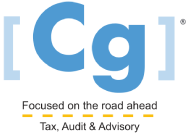Reports estimate that some 33% of businesses experience increasing fraud, year over year. Undetected internal issues like embezzlement and asset misappropriation can leave your business open to further fraudulent financial reporting, triggering IRS involvement and potential revenue loss.
Employing fraud prevention and fraud detection strategies is crucial to reducing this loss. Every organization should have a plan in place as preventing fraud is much easier than recovering your losses after a fraud has been committed. Forensic accounting services can prevent these situations and uncover financial crimes. It can help you figure out where stolen money has gone, and how to get it back.
Learn more about forensic accounting.

Types of Business Fraud
Business fraud comes in many forms but can be broken down into three categories: asset misappropriation, corruption, and financial statement fraud. Asset misappropriation, although least costly, made up 90% of all fraud cases studied. These are schemes in which an employee steals or exploits its organization’s resources. Examples of asset misappropriation are stealing cash before or after it has been recorded, making false expense reimbursement claims, and/or taking non-cash assets of the organization.

- Financial statement fraud comprised less than five percent of cases but caused the most median loss. These are schemes that involve omitting or intentionally misstating information in the company’s financial reports. This can be in the form of fictitious revenues, hidden liabilities or inflated assets.
- Corruption fell in the middle and made up less than one-third of cases. Corruption schemes happen when employees use their influence in business transactions for their benefit while violating their duty to the employer. Examples of corruption are bribery, extortion, and conflict of interest.
Fraud Prevention Strategies
It is vital to an organization, large or small, to have a fraud prevention plan in place. The fraud cases studied in the ACFE 2014 Report revealed that the fraudulent activities studied lasted an average of 18 months before being detected. Imagine the type of loss your company could suffer with an employee committing fraud for a year and a half. Luckily, there are ways you can minimize fraud occurrences by implementing different procedures and controls.
At Cg Tax, Audit & Advisory in NJ, we’ve carefully built a reputation for reliable and precise forensic accounting and financial assessments.
Our team is fully certified in financial forensics and specializes in investigative auditing and forensic valuations. The Cg team offers Certified Fraud Examiners (CFE), Certified Public Accountants (CPA), and CPAs who are Certified in Fraud Forensics (CFF)
We have decades of experience discovering potential accounting fraud, evaluating internal controls, safeguarding your business, and helping companies rebuild compromised financial record-keeping systems.
Learn more about how Business Audits can deter fraud
Key Factors in Preventing Business Fraud
1. Know Your Employees
Fraud perpetrators often display behavioral traits that can indicate the intention to commit employee fraud. Observing and listening to employees can help you identify potential fraud risk. It is important for management to be involved with their employees and take time to get to know them. Often, an attitude change can clue you into a risk. This can also reveal internal issues that need to be addressed. For example, if an employee feels a lack of appreciation from the business owner or anger at their boss, this could lead him or her to commit employee fraud as a way of revenge. Any attitude change should cause you to pay close attention to that employee. This may not only minimize a loss from fraud but can make the organization a better, more efficient place with happier employees. Listening to employees may also reveal other clues. Consider an employee who has worked for your company for 15 years that is now working 65 hours a week instead of 40 because two co-workers were laid off. A discussion with the employee reveals that in addition to his new, heavier workload, his brother lost his job and his family has moved into the employee’s house. This could be a signal of potential fraud risk. Very often and unfortunately, it’s the employee you least expect that commits the crime. It is imperative to know your employees and engage them in conversation.
2. Make Employees Aware/Set Up Reporting System
Awareness affects all employees. Everyone within the organization should be aware of the fraud risk policy including types of fraud and the consequences associated with them. Those who are planning to commit fraud will know that management is watching and will hopefully be deterred by this. Honest employees who are not tempted to commit fraud will also be made aware of possible signs of fraud or theft. These employees are assets in the fight against fraud. According to the ACFE 2014 Report, most occupational fraud (over 40%) is detected because of a tip. While most tips come from employees of the organization, other important sources of tips are customers, vendors, competitors, and acquaintances of the fraudster. Since many employees are hesitant to report incidents to their employers, consider setting up an anonymous reporting system. Employees can report fraudulent activity through a website keeping their identity safe or by using a tip hotline.
3. Implement Internal Controls
Internal controls are the plans and/or programs implemented to safeguard your company’s assets, ensure the integrity of its accounting records, and deter and detect fraud and theft. Segregation of duties is an important component of internal control that can reduce the risk of fraud from occurring. For example, a retail store has one cash register employee, one salesperson, and one manager. The cash and check register receipts should be tallied by one employee while another prepares the deposit slip and the third brings the deposit to the bank. This can help reveal any discrepancies in the collections.
Documentation is another internal control that can help reduce fraud. Consider the example above; if sales receipts and preparation of the bank deposit are documented in the books, the business owner can look at the documentation daily or weekly to verify that the receipts were deposited into the bank. In addition, make sure all checks, purchase orders and invoices are numbered consecutively. Use “for deposit only” stamps on all incoming checks, require two signatures on checks above a specified dollar amount and avoid using a signature stamp. Also, be alert to new vendors as billing-scheme embezzlers setup and make payments to fictitious vendors, usually mailed to a P.O. Box.
Internal control programs should be monitored and revised on a consistent basis to ensure they are effective and current with technological and other advances. If you do not have an internal control process or employee fraud prevention program in place, then you should hire a professional with experience in this area. An expert will analyze the company’s policies and procedures, recommend appropriate programs and assist with implementation.
4. Monitor Vacation Balances
You might be impressed by the employees who haven’t missed a day of work in years. While these may sound like loyal employees, it could be a sign that these employees have something to hide and are worried that someone will detect their fraud if they were out of the office for some time. It is also a good idea to rotate employees to various jobs within a company. This may also reveal fraudulent activity as it allows a second employee to review the activities of the first.
5. Hire Trustworthy Experts
Many of the people working for your company, including Certified Fraud Examiners (CFE), Certified Public Accountants (CPA), and CPAs who are Certified in Fraud Forensics (CFF) can all play important roles in establishing antifraud policies and procedures. However, not all of these experts have the experience or the reputation for providing the service that is best for your needs. When hiring accountants, fraud examiners, and other expert professionals who will have access to sensitive company information such as bank account numbers, it is critical to ensure these firms or individuals have reputations built on quality service and trustworthiness. This way, you can feel confident that your forensic analyses, basic financial consulting services, and internal control audits are thorough, and your information will never be compromised.
6. Live the Corporate Culture
A positive work environment can prevent employee fraud and theft. There should be a clear organizational structure, written policies and procedures and fair employment practices. An open-door policy can also provide a great employee fraud prevention system as it gives employees open lines of communication with management. Business owners and senior management should lead by example and hold every employee accountable for their actions, regardless of position.
Fraud Detection Strategies
In addition to prevention strategies, you should also have detection methods in place and make them visible to the employees. According to Managing the Business Risk of Fraud: A Practical Guide, published by Association of Certified Fraud Examiners (ACFE), the visibility of these controls acts as one of the best deterrents to fraudulent behavior. It is important to continuously monitor and update your fraud detection strategies to ensure they are effective. Detection plans usually occur during the regularly scheduled business day. These plans take external information into consideration to link with internal data. The results of your fraud detection plans should enhance your prevention controls. It is important to document your fraud detection strategies including the individuals or teams responsible for each task. Once the final fraud detection plan has been finalized, all employees should be made aware of the plan and how it will be implemented. Communicating this to employees is a prevention method in itself. Knowing the company is watching and will take disciplinary action can hinder employees’ plans to commit fraud.
Protect Your Business from Employee Fraud
Those who are willing to commit fraud do not discriminate. It can happen in large or small companies across various industries and geographic locations. Employee fraud can result in huge financial loss, legal costs, and ruined reputations that can ultimately lead to the downfall of an organization. Having the proper plans in place can significantly reduce fraudulent activities from occurring or cut losses if a fraud already occurred. Making the company policy known to employees is one of the best ways to deter fraudulent behavior. Following through with the policy and enforcing the noted steps and consequences when someone is caught is crucial to preventing fraud. The cost of trying to prevent fraud is less expensive to a business than the cost of the fraud that gets committed.
Request More Information
You may also be interested in:

